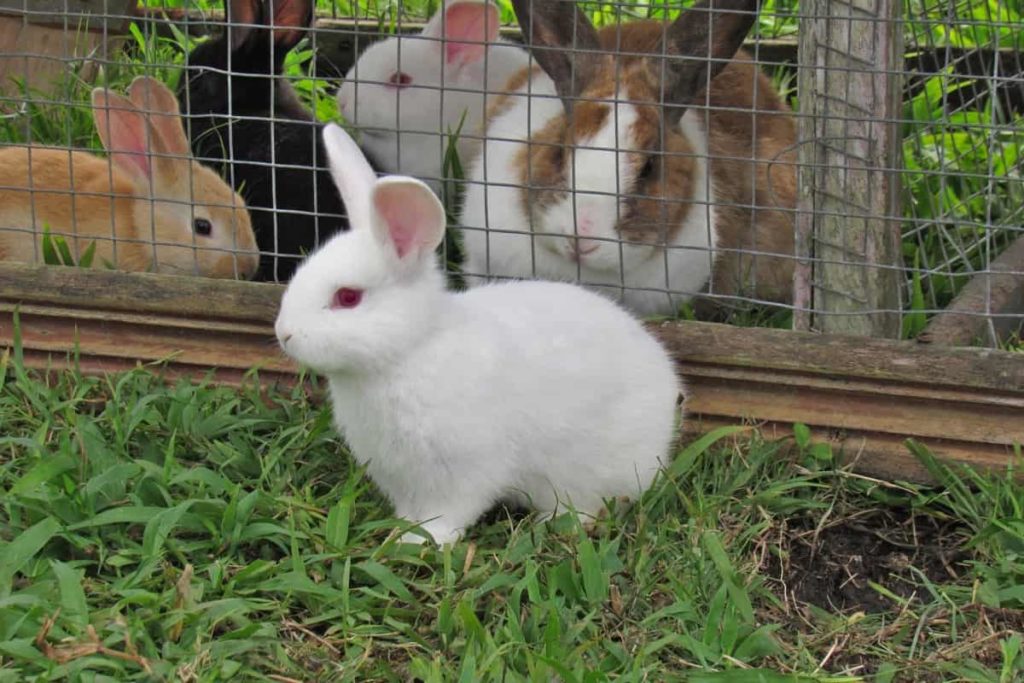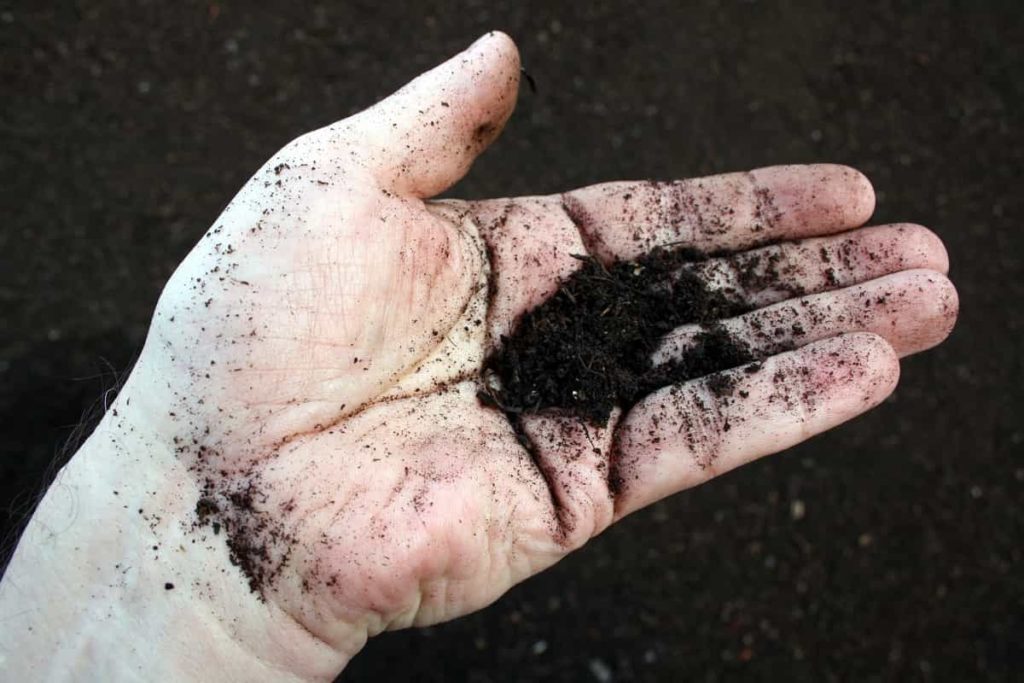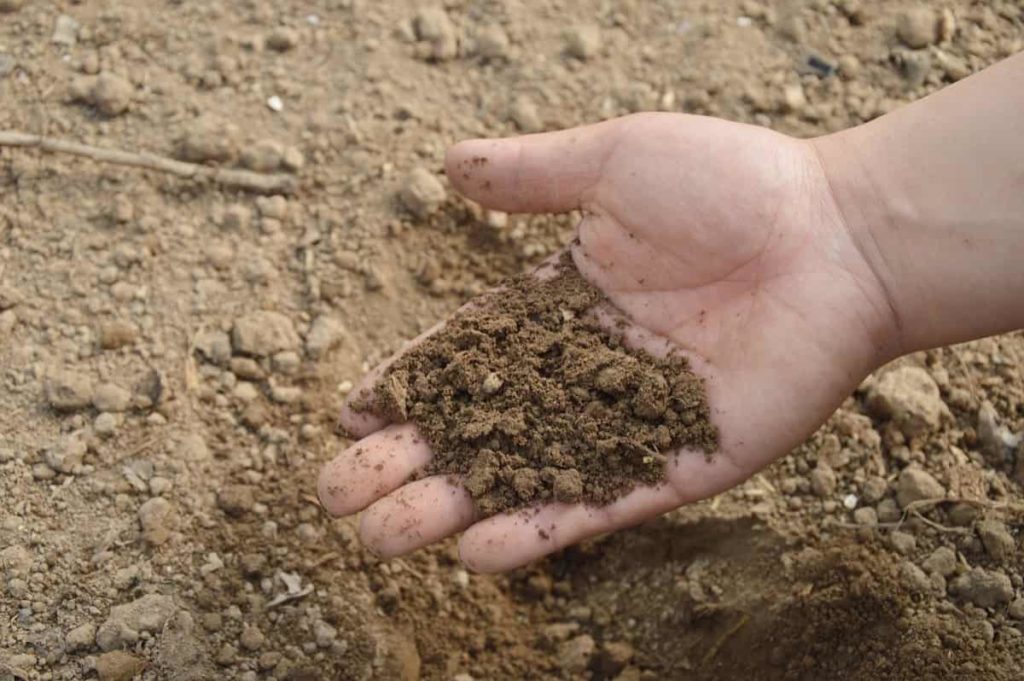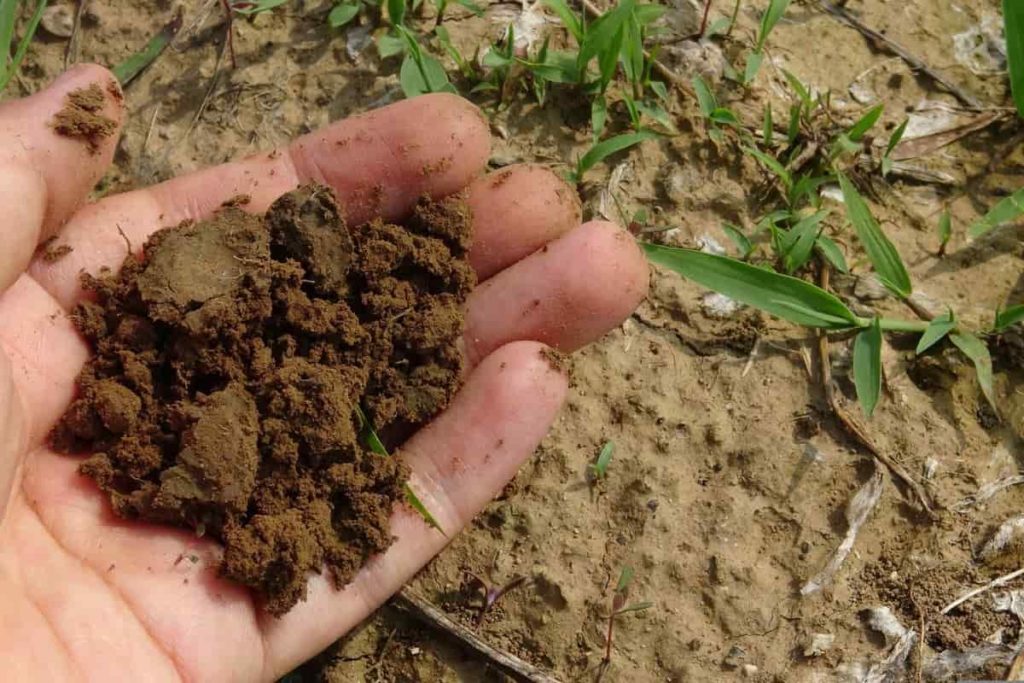The droppings of rabbits make excellent fertilizer. An organic fertilizer that is easy to access and nutrient-rich is rabbit manure compost. You can easily make rabbit manure compost whether you have rabbits in your backyard or you have some rabbit droppings in the rabbit hutch. This organic manure compost is rich, versatile, and mild on even the most sensitive roots. Aside from being odorless and dry, rabbit manure is convenient to handle and dispose of without much fuss.

Using this farming guide, you will learn how to make and use this dense fertilizer for your garden and its benefits. The rabbit droppings they leave on the ground while grazing fertilizes it and encourage future plant growth. Rather than throwing waste bags in the garbage, I use the poop to grow giant vegetables and make my flowers grow better. It is excellent for the garden to recycle rabbit poop. As a result, less waste goes to landfills, reducing the carbon footprint. Let’s check out how to make rabbit manure compost below.
Fertilizer made from rabbit manure is rich in nitrogen and phosphorus, which plants need for healthy growth. Prepackaged rabbit manure is available from rabbit farmers or can be purchased from prepackaged rabbit manure bags. Rabbit manure can be spread directly on garden beds, but many prefer to compost it first.
| Manure Type | N (Nitrogen) % | P(Phosphorus) % | K (Potassium) % | Release Speed |
| Rabbit | 2.4 | 1.4 | 0.6 | Medium |
- There is a high nitrogen concentration (N) in rabbit manure. Therefore, it is crucial for the overall health and growth of the plant that nitrogen is present. Plants that use nitrogen have lush green leaves, from leafy green vegetables to perennials and annuals.
- On the other hand, phosphorus (P) is necessary for flowering plants because it converts solar energy into chemicals. As a result, phosphorus-rich soil usually produces healthier plants and brighter blooms. In this case, rabbit manure is the most valuable organic animal manure out of all others.
- The plant also benefits from potassium (K), which helps it resist stress and disease. The potassium content of rabbit manure is identical to that of sheep and horses. Still, it is richer in this mineral than the potassium content of cattle, poultry, or pig manure.
- Compared to other organic manures, it has a medium release speed, while chicken manure has a fast release speed. It is a good trait in itself. Manure usually stays in the soil for a few weeks and slowly feeds the roots.
How to make rabbit manure compost
Some facts about rabbit poop facts
No poop works better in the garden than rabbit poop. Horse and steer manure have the same uber-benefits as this product, but with a distinct advantage. Because rabbit poop is considered cold manure, you do not have to allow it to age or compost before using it. Other manures, such as those from chickens, sheep, horses, cows, and pigs, must be composted for months before they can be used; otherwise, they will burn and kill plant roots. The case is not the same with rabbit poop. Rabbit manure attracts beneficial worms.
In case you missed it: Best Fertilizer for Gerbera Daisy: Homemade, Organic, NPK, and Compost Manure

- Beneficial worms are attracted to rabbit manure.
- Manure from rabbits improves soil structure and aerates the soil.
- The poop of rabbits can improve soil drainage and help retain water.
- It is rare for rabbit droppings to have an odor.
- The use of rabbit manure around crops grown for human consumption is safe.
Rabbit pellets as a super fertilizer
Under the rabbit cage, grab a handful of pellets and spread them all over the garden. These pellets will take time to break down entirely and incorporate into the soil. It is a slow-release product. Let the urine-soaked pellets dry out, or fold them into a few inches of soil if they are urine-soaked.
The pellets will build the soil’s structure, improve porosity, add stability, and hold nutrients for plants and other organisms during this breakdown process. Gardeners sometimes toss pathogens onto the compost pile because they are concerned about pathogens. However, adding poop to your vegetable garden may sound strange to some. Nevertheless, it is still worth mentioning that they can be added to a vegetable garden.
Usage of rabbit manure directly in the garden
In terms of composting, you do not need to worry about nitrogen in the soil if you can get on a small pile of rabbit poop every so often. A pile gets going with bunny gold; it’s nitrogen on steroids. Therefore, rabbits will always provide nitrogen for your compost pile if you have them. Gardening with rabbit manure can be done in a couple of ways.
- Rabbit manure contains a high nitrogen level, so mix it into your compost pile. You can also add high-carbon organic matter like straw, grass clippings, or shredded newspaper. Mixing the manure will maintain the carbon-nitrogen balance of the compost pile.
- Make a rabbit compost tea or bunny brew from rabbit pellets to take advantage of all their growing goodness. Put rabbit pellets in a bucket and fill it with a five-gallon bucket. It needs to be stirred now and then for a few days. Water your plants with the tea at the top of the bucket after the manure has settled. You can dump the remaining manure on the compost pile at the bottom of the bucket.
In case you missed it: Homemade Fertilizers for Root Vegetables: Potatoes, Carrots, Beetroot, Onions, Radishes, Turnip, Ginger, and Garlic

How to make rabbit manure compost
Many people prefer to process rabbit manure before using it in their gardens, even though it is not a hot material. Most people dislike handling rabbit poop whenever they want to fertilize their rose gardens, which is ideal in many cases. Composting the manure solves that problem. The result will be an ideal fertilizer for garden plants and crops after composting rabbit manure. The rabbit manure should be added first to the compost bin or pile, followed by equal amounts of straw and wood shavings. The following steps should be followed when composting rabbit poop.
- Poop from rabbits can be collected under the cabinet. Ensure it is not contaminated with invasive plant seeds.
- The rabbit manure should be thrown into the compost bin.
- The exact amount of wood shavings and straw should be added. Upon decay, these organic materials provide food for worms and help break down the manure.
- Fermentation can also be accelerated with kitchen leftovers, rotten leaves, mowed grass, and food scraps.
- Coffee grinds and citrus-based materials are toxic to the bacteria that break down manure.
- Use a pitchfork to mix the contents well.
- Use a garden hose to water the mixture. Maintain a good moisture level in the manure without overwatering it.
- Add earthworms or red wrigglers to speed up composting,
- Place the bin in a protected area away from the cold wind and cover it with a trap. Keeping the worms on the ground makes it easier for them to move in and out of the bin.
- Water the manure every two weeks to keep it moist.
- Put food scraps and rabbit poop in a pile, stir it, and water it.
- Cover the pile with a tarp whenever you have more.
The manure to compost and prepare for the garden will take a few months to a year. Based on the compost pile’s size and other factors, such as heat, this process may take a few months to a year. The decomposition can be sped up by adding coffee grounds or enticing earthworms.
Use rabbit droppings as a feed to worms in composting
Worms can be fed rabbit poop in compost beds. Firstly, do not feed your worms fresh rabbit manure. As a result of the much nitrogen content in rabbit urine, along with the additional nitrogen and salt content, the worms will die. For bedding purposes, instead of composting rabbit manure, pre-compost it.
After a few days of composting, test the compost by adding worms to a small amount of manure. The bin should be opened after 15 minutes. If the worms are huddled together or climbing up the sides and ceiling of the bin, then the manure is not ready. Continue composting for a few more days. The compost is safe when the test worms are happy to burrow down and stay there.
In case you missed it: Best Practices to Grow Amaranth from Seed to Harvest: A Complete Guide for Beginners

Can we use rabbit manure on the Lawns?
The top dressing can also be made from rabbit manure or rabbit compost, but use caution. Be sure the manure from pellets or grains that have been cleaned does not contain weed seeds. Also, you might not like the appearance of the lawn if you use rabbit manure if you add hay and straw to the rabbit feed.
Using rabbit manure compost in the garden
It is a great way to give plants the nutrients they need for robust growth by composting rabbit manure. It is not possible to burn plants with composted rabbit manure fertilizer. Instead, plants can be treated with this product safely and efficiently. In terms of compost beauty, rabbit manure compost is highly versatile. Mostly, it is safe and effective for various plants and situations.
Where and how to use rabbit manure
Digging and tilling rabbit manure or compost into garden soil can produce good results. Any soil type can be treated with this manure, whether clay, sand, or another. As a result, soil texture is improved, making it more receptive to rain and generally improving flowers and vegetables.
Dig the compost into the flower beds before planting, and you will soon have a good stand for whatever you want to grow. Next, add more compost to the soil to mulch the plants. As a result of mulching, moisture is conserved, weeds are smothered, and the beds are kept attractive and low-maintenance.
Top-dressing
Rabbit manure is easily applied with this top dressing. The stuff should be spread around the base of the plant without touching it. Watering the soil will allow the slow-release fertilizer to reach the roots of the plant, nourishing them for a long time.
Mix it in the compost
In addition to spreading over the topsoil, mix this nutritious compost with the potting soil to improve its drainage. It can also apply to the soil in the garden. Break the soil and add a sufficient portion of rabbit manure compost to the mix using a hoe. Ensure the plants need much nitrogen before adding it to the soil or potting mix, as this compost is rich in nitrogen. Otherwise, as with some flowering perennials, you might have more leaves and stems than flowers.
Safety with compost
It is safe to use rabbit manure compost. However, this is still fermented material full of germs and bacteria. A good rule is to wait at least four months before applying compost to veggie patches. The manure will be safe to apply after that period, as all germs and pathogens will have died. This time gap is subject to carrots, beets, lettuce, and other plants with edible roots. Pathogens are more likely to spread when they come in contact with the soil’s compost.
Make sure the veggies are cleaned well, and traces of fertilizer have been removed using a few drops of vinegar in the water. The compost should also be applied to the soil, not the plant’s leaves, stems, or flowers. This manure can burn the leaves of the plants and ruin their flowers when applied to the leaves. Bacteria could also cause a fungal infestation on the leaves in the manure.
In case you missed it: How to Plant Blueberries from Seeds: A Beginners Guide to Sowing to Harvest

Why is rabbit poop the best fertilizer?
As rabbit dung is dry, odorless, and pelletized, it can be directly used in the garden. The roots of plants are usually not burned by rabbit dung since it breaks down quickly. Plants need nitrogen and phosphorus nutrients for healthy growth. Rabbit manure fertilizer is rich in these nutrients. People refer to rabbit pellets as bunny gold for the following reasons:
Nutrient-rich properties
- The nutrition in rabbit manure is four times that of cow or horse manure. On the other hand, the nutrients in chicken manure are twice as high.
- The right combination of nitrogen, phosphorus, and potassium is necessary for plants.
- The nitrogen content of rabbit manure is two percent, and potassium and phosphorus are each one percent. So, it is very, very nutritious for the plants due to these nutrients.
Very minimal of the wrong stuff
Manure containing uric acid and ammonia, such as horse and cow manure, may harm plants if not composted. However, compared to other types of manure, rabbit pellets contain less uric acid and ammonia. Therefore, if applied untreated, it won’t burn plants.
Easy to handle
Manure can be easily applied to gardens to give plants the necessary nutrients. Furthermore, this manure is not sticky or messy like other animal manures.
Free of cost
Gardening with rabbit manure makes rabbit manure valuable if you grow rabbits at home. The plants will receive manure-based fertilizer free of charge, while the rabbits will be kept in a clean and neat environment
Pathogens
Even though rabbit poop is generally safe to use directly out of the litter box, you might worry about using it on food plants. Before applying rabbit droppings to food plants in the garden, compost them for extra safety.
Flies
Rabbit manure can attract flies, just like any other manure. These flies can cause Rabbit flystrikes. Rather than leaving rabbit droppings on the ground, bury them or work them into the soil if you are concerned about attracting flies.
Smell
In a healthy rabbit, the feces will be nearly odorless. Rabbit feces are small, round brown pellets that should be firm and dry. If the rabbit feces are watery, look like cow patties or have an odor, he might have intestinal parasites or another illness. The droppings of rabbits are generally not offensive. If the smell bothers you, bury them in garden soil.
In case you missed it: Cow Manure For Plants – Composting, Benefits

Uses of rabbit manure in the garden
Suppose you don’t have the patience or desire to compost rabbit manure. However, you can still use it in its current form and shape in the garden.
- Direct application: Collect rabbit droppings from the hay in their cabinet and sprinkle them around the garden. It will not burn the roots due to its slow release of nutrients.
- Transplanting: Drop a few pellets in the hole when repotting or moving a transplant. As soon as the roots are established in the soil, they feed the roots and give the new plant a good start.
- Tea for crops: Remove it from the solution approximately five days after the manure is soaked in water. Then, when you water your crops, use it as a liquid fertilizer.
- Food for worms: Vermicompost relies heavily on earthworms and red wriggler worms. The pellets should first be treated at high temperatures before being fed to the worms.
Conclusion
Compared to other animal manures, rabbit manures have high nutrients, significantly benefiting the plant’s growth and higher yields. In addition, because of odorless and nitrogen-rich, this can be widely preferred by cultivators to make use of this in their gardens for healthy root systems and to produce better and bigger fruits.
- How to Grow Tomatoes Organically at Home: A Comprehensive Guide
- Organic Gardening on a Budget: Low-Cost Methods and Materials
- Gongura Seed Germination and Planting Methods
- Cabbage Seed Germination and Selection
- Broccoli Seed Germination and Selection
- Asparagus Seed Germination and Variety Selection
- Seasonal Flower Gardening: Best Practices for Spring, Summer, Fall, and Winter
- How to Grow Hibiscus from Flower
- Plantation Ideas for Home Decoration: A Beginners Guide
- Flower Garden Designs and Layouts for Beginners
- Planting and Spacing Techniques in Papaya: A Beginner’s Guide
- Growing Gold: Essential Techniques for Planting Pineapples
- How to Make Kalanchoe Plant Bushy: Home Remedies and Solutions
- 11 Reasons Why Your Gardenia is Not Blooming: Home Remedies and Solutions
- Eco Elegance: The Guide to Designing a Drought-Tolerant Landscape
- Gardening on a Slope: Strategies for Hillside Landscaping
- Nourish and Flourish: Top Organic Mulches for Thriving House Plants
- Everything You Want to Know about Indian Mogra Flower: Discover Uses and Growing
- Green Thumb Success: Expert Tips for Cultivating Greenhouse Pumpkins All Year Round
- Maximize Growth & Flavor: The Ultimate Guide to Companion Planting in Herb Gardens
- How to Control Rhododendron Problems Naturally: Home Remedies and Organic Ways to Fix Them
- Natural Magic: The Remarkable Benefits of Cinnamon for Plants
- Best Steps to Revive Dying Tulip with Natural and Organic Treatment
- 10 Reasons Why Your Angel Trumpet is Not Blooming: Remedies and Treatment
- How to Fix Periwinkle Leaf and Flower-Related Problems: Natural Remedies and Solutions
- How to Fix Zinnias Leaf and Flower Problems: Discover Natural and Home Remedies
- Organic Steps to Induce Lemon Tree Flowers: A Comprehensive Guide
- Bloom Booster: Crafting the Perfect Homemade Bougainvillea Fertilizer
- Optimizing Growth: A Guide to Applying NPK Fertilizer for Potted Plants
- 10 Best Homemade Fertilizers for Rubber Plant: DIY Recipes and Application Method
- How to Boost Female Pumpkin Flowers: Effective Steps for More Flowers and High Yields
- Transform Your Indoor Garden: Top Benefits of Pink Salt for Houseplants
- 10 Best Homemade Fertilizers for Peacock Plants (Calathea): Easy DIY Guide
- Unlock Blooms: 9 Reasons Why Your Potted Chrysanthemum is Not Blooming
- 8 Reasons Why Your Potted Hibiscus is Not Blooming: Fix it with Simple Solutions
- Unlock Blooms: 9 Key Reasons Your Potted Frangipani Won’t Flower